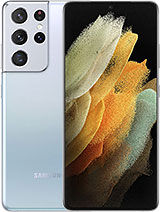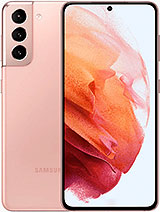Samsung Galaxy S21 Ultra - Camera First look and Pro Photographers Tips By Rob Mulally
What you're, actually looking at there is footage that captured it. This is New Year's Eve on the s21 ultra hi. I'm rob I'm a full-time photographer and content creator based in Sydney, Australia, and today we're here to talk about the Samsung Galaxy s21 ultra. So my plan is to go through some of my favorite features in the new phone and share some tips and tricks, as I can so, as you can probably can see, the s201 comes with four lenses. We've got the ultra-wide, the wide the zoom three times and then the zoom 10 times they are going to give you a lot of flexibility and versatility when you're out shooting. Now the main camera is actually on the 108 megapixel sensor, and it has an amazing technology where it actually can use nine pixels as one it's called pixel binning, which gives you some amazing low light performance now, the having so many cameras and having that um large sensor in the main camera.
It means that you can shoot in some really dynamic environments and there's no more dynamic environment than the sunrise. So, with all those lens options, you're obviously got a lot of flexibility. Uh take, for instance, typical sunrise, you'll get there it'll be blue hour. You want to take some photos of before the sun's risen. Maybe some reflections in an ocean pool then uh as the sun sort of starts to rise up.
Maybe it peeks through the clouds, and you want to take again a wider shot or zoom right in on the clouds, because sometimes those rays as god rays coming through, looks really epic uh. You might then go down and want to sort of shoot, a more creative composition using the zoom lens and the sort of golden light like casting onto the pool there. And then maybe you want to go down and get a wider shot, but you'll notice when you're there's quite a lot of contrast between the sort of shadows and the sky, so you'll tap on the sky and click the little sun to set the exposure compensation to a little darker. So you get make sure you get the shot that you want and that's just in the standard camera app. If you want to flick over to the pro mode, you can then split.
The exposure out have the focus on the pool and exposure on the sky, and that's topic probably for another day. So you do have a lot of flexibility and the program camera basically allows you to shoot in any light when it comes to the bright night camera. There are a lot of scenarios where this is really handy. What will happen in the default? App is it'll, detect that there's a low light uh the scene optimizer will come up with the icon to say that you're going to be in sort of night mode and when you take a photo there'll be a countdown that goes across the shutter button there. What that allows you to do is take some really, really amazing photos.
Here's an example of a shot. When I was on the harbor's edge near Tonga zoo, the night mode automatically came on, and then you can see it took a photo. It was three seconds, and it's nice and sharp. So then I thought I'd test it out, and I pointed it almost down. You can see.
It's just black darkness there below and this is the photo that came out of what you can see on the screen. Uh. The camera literally, could see stuff that I couldn't, and that was pretty amazing. We can't really talk about the estimated ultra without talking about the space zoom and for me having the three times optical and the ten times optical zoom is more than just a convenience. It's actually almost a necessity.
Now there are certain compositions, like I showed you with the sunrise where you just can't get that shot: um uh without the optical zoom. Another thing is usually when you're hiking or going on a walk, you're looking out into the distance and so to sort of simulate. What I mean by that I decided to go up to Tanya park, which is part of the spit to manly, walk, and it's an amazing spot, because it's actually where the ferries cross over in the half entrance there, and so when you're, looking at it with your eyes, you're thinking wow. This is amazing. Look I can see the fairies, but then usually you whip out your phone and it's so far away.
It actually allows you to capture the moments that you sort of naturally see, so you're, not really zooming in you're just sort of capturing what you would expect to see as opposed to a wide shot. I have a few examples here of the space zoom in action. You can see that here is from the church manly all the way to North Dakota. That's pretty crazy! So one of the cool features of the space room, a little yellow box will appear, and it'll help you sort of not only visualize where you are aiming your shot, but it'll actually help stabilize and lock that video down as well. So you won't get this sort of shakes when you're zooming really far in so when you are out for a hike or visiting somewhere new.
Usually you want to take a photo of yourself with something in the distance, so as a tip of sometimes you want to be actually standing back zooming in to make the two objects look closer together and that'll make travel, photos and holiday photos appear, like you see them with your eyes as opposed to how they sometimes look on a wider lens. The zoom is a really fun one to demonstrate. You can actually do it anywhere. You just have a person stand with something in the background, and obviously you walk back and zoom in on them, and they'll appear closer together. So having three times and 10 times, optical zoom is more than just taking photos of things really far away, which is super cool, but it's actually a really powerful compositional tool and something that I'm really excited to have in the s21 ultra.
So taking advantage of those zoom lenses is a new mode in the camera, app called director's view. What actually does is actually show you a preview from all the different lenses, while you're recording a video, so you can actually wait for the perfect moment for tapping and zooming in or zooming out on different subjects. The director's view also allows you to actually show your own face in the video and actually record that in there, in a world where social media wants more and more video, the less time you can spend editing videos afterwards and the more you can actually sort of do it right in the video app itself, the quicker you can and the more likely you are to actually create something um that might have taken you a bit of fiddling around afterwards, where you can just do it straight in the camera app itself. So also new is single. Take 2.0 and what that allows you to do is choose between 5 seconds 10 seconds 15 seconds, and you can actually just press record and capture the moment capture, whatever you're doing, and the artificial intelligence will take and chop that up, it'll, pick sort of key moments and actually stylize those photos. Um it'll find moments where it thinks it'll.
You know the movement back and forth will look good as a boomerang. There'll, be time, lapse, sequences, sort of dynamic slo-mo, and it's really cool mode now, where it actually will allow you to see like a cinematic sky where the sky changes color and fades. So you can capture the moment and then pick and choose from either the original video or one of these automatically generated clips, rather than having to sort of do the thing over and over again and choosing the different modes. When I was arriving at Tanya park, I came in on the skateboard and picked it up and did the pan up to the sky and a bit of a pan around, and this is some of the cool clips that came from that. So to see those clips, you can go back to the original shot and just swipe up, and you'll see the gallery of all the different images there, and they're super easy to share the videos and photos are ready to go so as much as I love the camera.
The most important thing, probably about a phone, is the screen itself. I've had a number of people when I've out been taking photos on Samsung phones where they'll just see me take a photo and go wow, it's an amazing camera, and it is. But it's also the amazing display that you're viewing that photo back on uh and the 6.8 inch inf initio display on the s29 ultra is no exception. I noticed when I was outside it's super bright in the sun, which is really, really useful. If you wanted to be out taking photos and using your phone when you're back at home, knowing the phone will take care of your eyes with the blue light.
Filter is powerful, but a little tip again make sure you turn that off. If you're editing photos, you don't want to give it the photos of the wrong colors. Samsung's screens are known for their rich and vibrant colors. However, they're also known for giving you options. So if you do prefer a more natural tone, you actually can jump into the display settings and just toggle that to natural and some people might prefer that the screen also has the adaptive screen performance where it can go up to 120 hertz.
What that means is the screen will refresh a lot faster, and it means that when you're actually using it, all the animations will appear smoother and just like it's just a joy to use really and when you don't need it, it'll, actually sort of slow that refresh rate down and actually give you better battery performance. Speaking of battery the phone has a 5 000 William hour battery that actually can optimize itself based on your usage patterns, balancing that performance and efficiency. So I know I've just scratched at the surface. There's so many features that the phone has, and I can't wait to take it on more adventures to see what I can create with it. Hopefully, uh you've learned something from this, either about the phone or maybe a few tips, and if you can't tell already I'm quite passionate about mobile photography, so if you have any questions, feel free to reach out to me on social media at righto valley, I, like talking about photos and phones, so feel free to send a message anytime.
You.
Source : Rob Mulally


























